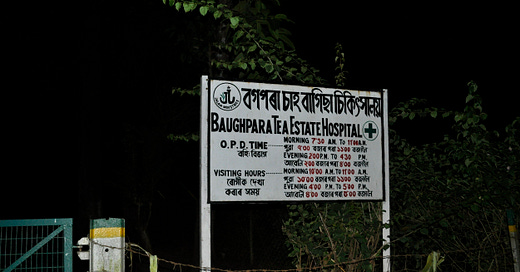My current plan for travel medical insurance
Over the years, I’ve sought medical treatment in Mexico, Ethiopia, India, and the United States while traveling. I’ve been fortunate enough that the treatment abroad was affordable and adequate medical care was available where I was. But I now know enough to know that’s a risk I no longer want to take. You need medical travel insurance, no matter what, especially coverage for medical evacuations. Outside a major city in a less-developed country, if you are sick or injured, “evacuation” gets you to the place that’s able to treat you.
I don’t have independent travel insurance right now. My plan is my primary employer-provided medical insurance plus the medical insurance benefits that come with my Chase Sapphire Reserve credit card. Since we all have different primary health insurance options, I’ll talk about the benefits that come with the CSR.
Emergency evacuation and transportation
This benefit provides emergency evacuation and transportation. If you or immediate family members are injured or become ill during your trip and it results in a necessary emergency evacuation, the insurance will cover the evacuation and transportation costs up to $100K.
Evacuation in this case means transporting you from where you’re injured or ill to the nearest hospital that can treat you. It also means getting you from that hospital to back home to recover or get additional treatment. The transportation can be air ambulance, land ambulance or even a private car if needed.
Insurance can pay for a relative or friend to come to you if you’re in the hospital for over 8 days. It will also reimburse you for an economy ticket home if you can’t use your original ticket anymore.
You can’t make the arrangements yourself, then ask the insurance to reimburse you; the Benefit Administrator must make the actual medical transportation arrangements for you. The benefit administrator will check with a licensed doctor who verifies than you need evacuation.
Your travel medical benefits are only valid during a covered trip. You must charge some or all of the cost of the trip to your CSR. Your trip has to be at least 100 miles from home and at least five days long and no more than 60 days long.
You first have to submit your expenses to your medical insurance company. Your travel insurance will cover whatever isn’t paid through your primary insurance.
Certain risky activities aren’t covered, like scuba diving, rock climbing, or accidents that happen because you were intoxicated.
It doesn’t cover you in countries the US views as unsafe to travel in, which I assume would be a Travel Advisory Level 4. Today, that includes Myanmar, Somalia, Libya, Russia, Yemen, Afghanistan, and others.
So, if you’re traveling and have an emergency, call the BA. They will send a claim form to you.
Emergency Medical and Dental
The insurance also covers any medical or dental emergencies that occur on a trip. Like the evacuation benefit, it’s secondary insurance to whatever your health plan would pay. It has to be recommended by a licensed doctor and treatment is covered only during the trip, not after.
This benefit is for $2,500 for you or immediate family members. It covers all licensed care givers, hospitals, x-ray, anesthesia, labs, ambulance, drugs, therapies, and medical devices.
Hotel Convalescence
If you’re hospitalized on your trip, but then need to recover in a hotel until you’re ready to go home, the insurance pays $75 for up to five days in a hotel.
For emergency medical or dental insurance you should try to call the BA, but must notify the Benefit Administrator within ninety (90) days from the occurrence.
Summary
Call the BA first. start the process with the travel insurance company
Call your employer health insurance
Pay your bills - use a credit card if you can and save all your receipts.
When you get home, call the number on the back of your member ID card and ask for a claim form.
Fill out the claim form and submit it with your receipts to the address on the claim form. (The amount submitted must be in American dollars).





